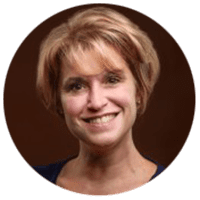Interview: Virtual Roundtable on Omnichannel Strategies - August 2020
With Mark Bard, Meg Rivera, Amy Turnquist, Justin Grossman, and Clay Romweber





Using Data to Make Better Decisions
A 11 minute watch. This video is a summary of a conversation between the DHC’s Founder Mark Bard and Meg Rivera, Amy Turnquist, Justin Grossman, and Clay Romweber. The discussion focused on some of the changes with HCP engagement, omnichannel strategies, and how we’re using data to make better decisions. A transcript of the video is also available below (edited for clarity).
Video Transcript
Mark Bard: My name is Mark Bard, Co-Founder of the DHC Group. Today, we’re going to be talking about some of the changes with HCP engagement, omnichannel strategies, how we’re using data to make better decisions.
The folks we have on today include:
– Meg Rivera, recently SVP of Marketing at AMAG Pharmaceuticals. We’ve been working with Meg for many years on some great insights into not only what’s happening in the market overall, but how technology makes us make decisions.
– Amy Turnquist, EVP at eHealthcare Solutions. Great insight into content, how physicians engage with various resources online, and how we see that market changing. She’s also very active with the HBA, with Philadelphia as well as nationally.
– Justin Grossman, Managing Partner of MeltMedia. Bringing a lot of experience in terms of what’s happening in terms of content, but how some of those targeting and engagement strategies are changing over time.
– Clay Romweber, EVP at BioPharm Communications. He’s also going to give us background on what they’re seeing with clients.Clay does a lot of work in multichannel and omnichannel strategies within the pharma sector.
What I’d like to do is starting with Meg. Can you give me a snapshot of where we are in July 2020? I’ll frame it as an idea: are we stable, declining, or are we building out for the future?
Amy Turnquist: Specifically for pharma, what I’m seeing coming out of where we are, obviously, we’re being forced to adapt to new technologies. I think we’re just starting really to see some of the disruption that will come long term from this, in terms of how reps are engaging and then how we use digital channels to supplement that. Then more reliance, more data, and challenging assumptions that I think we’ve had in the past about what the relative interactions for HCP engagement really meant from a value perspective.
Meg Rivera: Your digital capability that you’ve engrained within your infrastructure and made native to your commercial work across the board really proved to be mission-critical in pivoting quickly and addressing what was happening in the marketplace. It’s proving to be a really great opportunity for organizations to look within, and really ask the right questions about that checklist of what you’re supposed to do as a pharmaceutical marketer or sales leader. Really assess “what’s going to work the hardest for me”. That’s, I think, a positive that we can take out of this situation.
Clay Romweber: You probably want much more diversity in the number of assets that are built into Veeva or whatever the reps’ CRM platform is. If you are a company that had a lot of that preplanned, then you were in better shape. You need to have good data connections that can inform the reps to be better marketers almost in a virtual environment. They are becoming like a local sales and marketing executive as much as anything, where their face time is going to diminish but they still need to make an impact and provide value. It’s really those companies that could make that happen.
For us moving forward into 2021, we’ve seen two main themes and that’s really whatever we’re going to do with a client around omnichannel, we want to make sure we’re resourcing the field force as part of that and part of our solution. Also, let’s push sophistication on the digital side, the non-personal omnichannel, multichannel side.
Amy Turnquist: To really be able to pivot within a multichannel or omnichannel strategy, you need to have more than one channel that can deliver specific – similar types of engagement strategies. Recognizing that not everything in your portfolio is equal. I would say the brands that seem to do this really well had diversified strategies to begin with, and they had scalable options. They had different options to choose from and they had different assets that they can use.
We had some clients that we found with eHS that when they were in this situation that they didn’t have the rep access, they were trying to scale what they had available for digital engagement through banners. You had clients that were trying to use awareness tactics for banners. They’re great for awareness but not for engagement or true interaction or connection or movement. Trying to use those to replace the true engagement that the reps were delivering in the field. That didn’t work because you weren’t substituting similar tactics.
Justin Grossman: I think everything that we’ve done in the e-detailing or [IBA] space, has been really focused on taking a printed piece, a sales aid-type scenario and trying to digitize it. I think there’s going to be a bigger shift because now, if you look at these reps that are going to be digital-focused, they’re going to have to be looking at what I’m calling micro interactions. They’re going to have less access but they’re going to be needing to solve a specific question, it might be an access question, or it might be a dosing question. Everything is going to have to be structured more in order for them to be able to deal with a specific scenario or a specific type of conversation. I think that’s going to be a big shift for the industry.
Meg Rivera: I think the interesting thing about this too, though, is that we’re probably going to have to start to think about sales as a channel that’s very dependent on the life cycle of a product. An HCP is going to be much more apt to accept a virtual detail from a representative that’s bringing new information to them versus somebody who maybe has a product that’s been on the market for some time and they’re familiar with the data already. Really, all they’re looking for is, let’s say, a sample or help with getting access to a prescription for one of their patients in their practice. I do think we’re going to have to build more nimble sales organizations and more nimble competencies, to round out really how we’ll be doing business in the future.
Right now, marketing teams are typically built around customer acquisition. The majority of the investment in time and resources really truly goes towards that customer acquisition without as much mindfulness around that experience with the brand. Whether that’s an HCP or a consumer, it’s mission-critical. It was critical before to tremendous success, it’s going to be even more critical moving forwards.
We’re having conversations now about can we do this weekly. Can we set up real-time APIs, and that’s in direct reference, I think, to two pieces. Clearly understanding our client preferences, the physician preferences, so that we can be there at the right time with the right message and create that experience. Also, really try to get more scientific about understanding how we’re investing resources across the board to create those engagements.
Meg Rivera on LinkedIN
Amy Turnquist on LinkedIN
Justin Grossman on LinkedIN
Clay Romweber on LinkedIN
